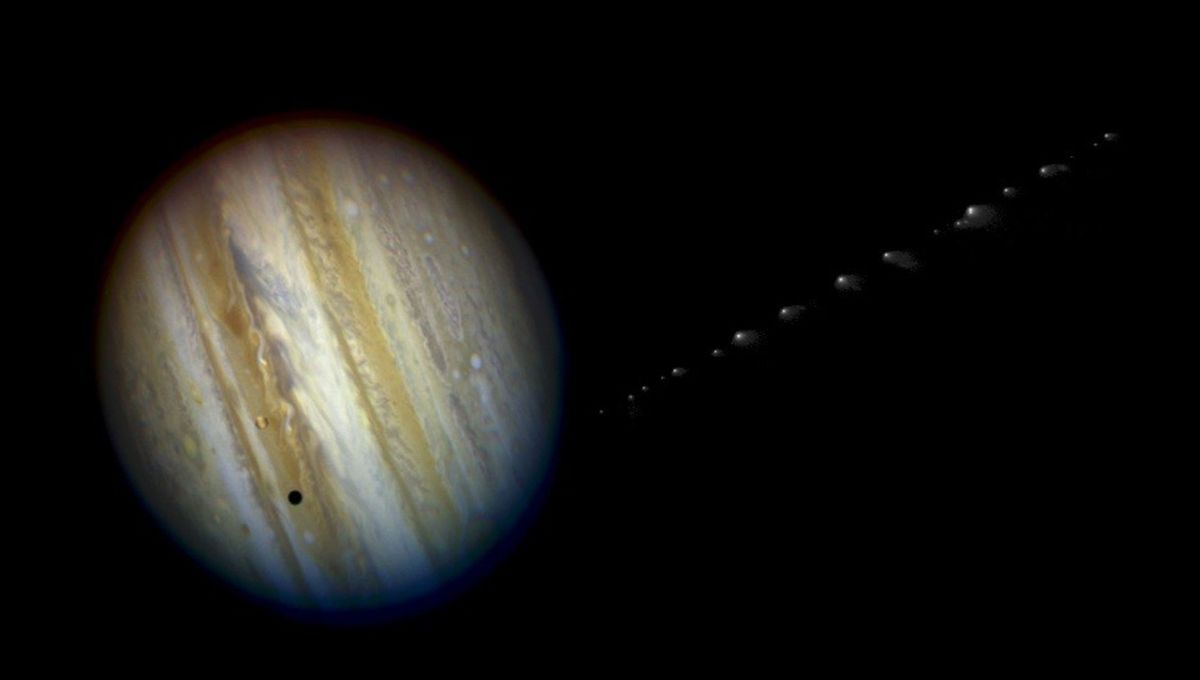
The rings of Jupiter might not be as spectacular as Saturn’s (whose are?) but they are there. However, one of them may not have existed before just a few decades ago. A new hypothesis suggests that the breaking apart and eventual collision of Comet Shoemaker-Levy 9 – the first space rock ever directly observed hitting another Solar System body, Jupiter – left behind a stream of dust within the area of influence of the gas giant. Over the last 30 years, these particles might have organized into a thin ring.
If confirmed, this will be the youngest of all the rings around bodies in the Solar System. This intriguing proposal was presented at the American Geophysical Union Meeting this week by Professor Mihaly Horanyi. Comets can leave enough material for meteor showers to form, so could their destruction create rings?
Let’s go back to 1992, fashion is minimalist and full of denim, tattoos and piercings are becoming mainstream, Sir Mix-a-Lot is at the top of the playlists, and a comet is about to have a fateful encounter with Jupiter.
In July 1992, Comet Shoemaker-Levy 9 (simply known as SL9) passed through Jupiter’s Roche Limit. This is the region where the tidal forces of a planet are stronger than the forces that keep a solid world together. The comet broke into 21 fragments, which continued to orbit around Jupiter.
It was discovered the following year by Carolyn and Eugene M. Shoemaker, and David Levy and was the first comet ever known to orbit a planet and not the Sun. It had been captured by Jupiter, 20 or 30 years earlier, orbiting the planet every two years. Following the 1992 disruption though, its fate was sealed.
Fragments hit the planet with a speed of 60 kilometers (37 miles) per second, between July 16 and July 22, 1994. The largest of these fragments was 2 kilometers (1.2 miles) across. The impact, the first observable object collision in the Solar System, was bright enough to be visible for months after. We’ve seen many things hit Jupiter since then. It’s not what hits Jupiter that matters to Professor Horanyi, it’s what’s left behind.
“When SL9 broke apart it surely generated a lot of small particles,” Professor Horanyi told IFLScience. “This happened inside Jupiter’s magnetosphere where the dust gets electrically charged, and in addition to Jupiter’s gravity, electromagnetic forces move particles on orbits that remain tied to Jupiter. Subsequently, they lose energy and angular momentum and the dust particles settle into a ring around Jupiter.”
This could mean that Comet SL9 was the first one we saw bound to a planet, the first one we saw smacking into said planet, and maybe as a parting gift leaving a brand new ring around the planet. But we will have to wait for NASA’s Europa Clipper mission to find an answer to this hypothesis because the ring is likely too thin for our telescopes to see.
“The expected optical depth of this ring is very small, so probably remains hidden in telescopic observations,” Professor Horanyi told IFLScience. “However, it could be possibly noticed by in situ dust detectors, like the SUDA instrument on its way to Jupiter onboard NASA’s Clipper mission.”
Europa Clipper is a mission that aims to study Europa, one of the intriguing icy moons of Jupiter like no other spacecraft has done before. It will reach Jupiter in 2030, after a journey of five and a half years.
Source Link: The First Comet We Ever Saw Slam Into Jupiter May Have Left It With A New Ring